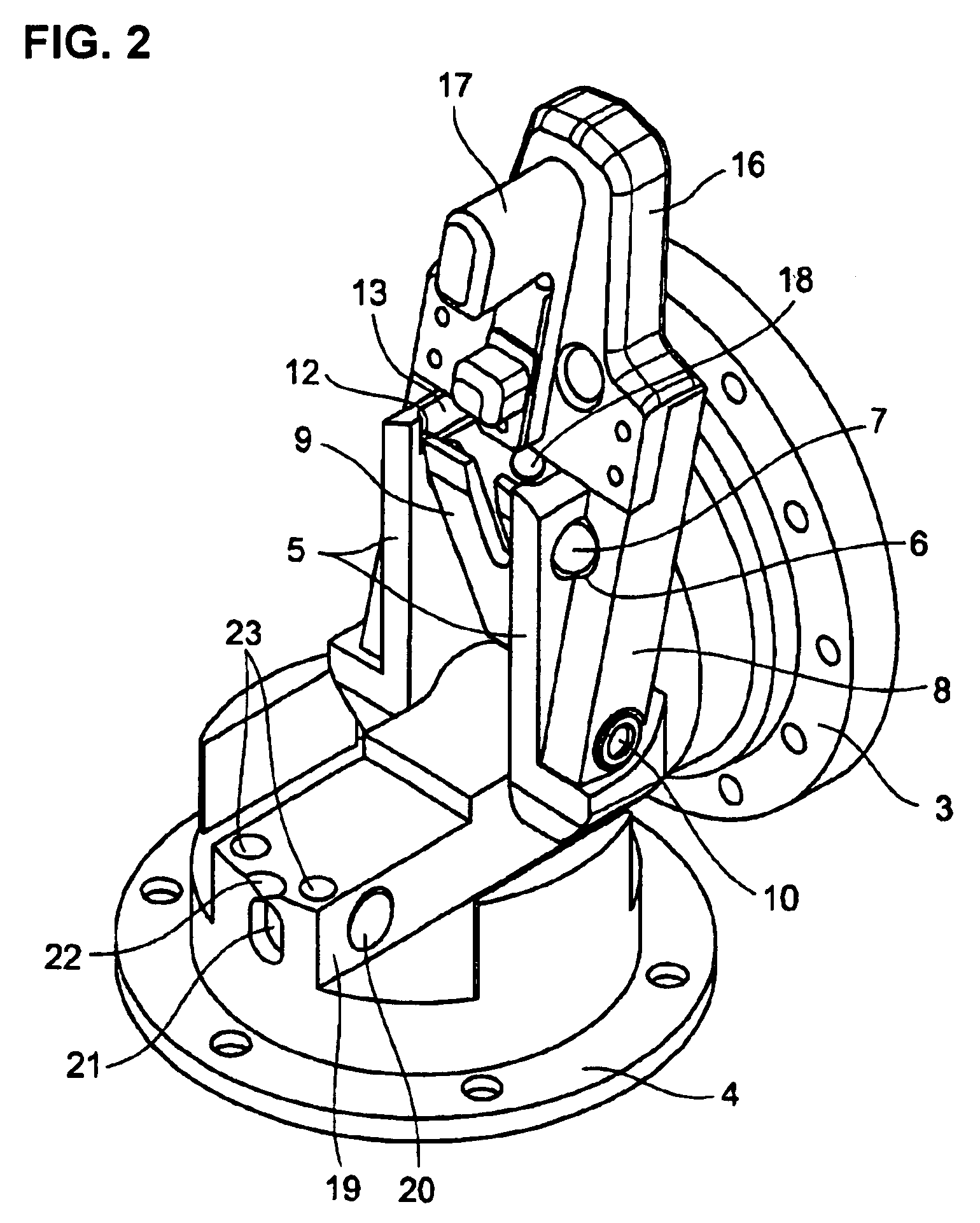Steering wheel tilt device
a technology of steering wheel and tilt device, which is applied in the direction of mechanical control device, process and machine control, instruments, etc., can solve the problems of radial load, inapplicability of the method to vehicles without such a mechanism, and the driver's difficulty in getting on or off, etc., to achieve suppressed backlash, small force, and large force
- Summary
- Abstract
- Description
- Claims
- Application Information
AI Technical Summary
Benefits of technology
Problems solved by technology
Method used
Image
Examples
first embodiment
[0044]FIGS. 1A to 1C are explanatory views each showing a mode of use of the steering wheel tilt device according to the present invention. FIG. 2 is an outline view of a tilted state of the steering wheel tilt device. FIG. 3 is an outline view of a fitted state of the steering wheel tilt device. FIG. 4 is a lateral view of the steering wheel tilt device. FIG. 5 is a lateral cross-sectional view of the steering wheel tilt device. FIG. 6 is a cross-sectional view taken along a line A-A″ of FIG. 4. FIG. 7 is an enlarged view of a region B of FIG. 6. FIGS. 8A to 8E are transitional views of tilt-up operations from a fitted state of the steering wheel tilt device. FIG. 9 is a cross-sectional view taken along a line D-D″ of FIG. 8A. FIGS. 10A to 10C are step views of coupling operations from a tilted state of the steering wheel tilt device. FIG. 11 is a lateral view of left and right sleeve arms as viewed from inside. FIG. 12A is a lateral view of a projecting portion. FIG. 12B is a cros...
second embodiment
[0066]A steering wheel tilt device according to the second embodiment of the present invention will be described with reference to FIGS. 13A and 13B. FIG. 13A is a lateral cross-sectional view in this embodiment of the present invention. Referring to FIG. 13A, in the vicinity of the first rotational shaft 30, a hole 29 and two through-holes 25 are arranged on the socket 3 side and the plug 4 side respectively. FIG. 13B is a cross-sectional view taken along a line E-E″. Referring to FIG. 13B, grub screws 28 are in the hole 29. Balls 27 for giving resistance to rotation and a coil 26 are disposed in the through-hole 25. The steering wheel tilt device according to the second embodiment of the present invention is obtained by providing the steering wheel tilt device according to the first embodiment of the present invention with a construction for stopping the socket 3 in its open state at an arbitrary position desired by an operator.
[0067]First, the through-holes 25 are opened in the p...
third embodiment
[0070]A steering wheel tilt device according to the third embodiment of the present invention is obtained by providing the steering wheel tilt device according to the first embodiment of the present invention with a construction for removing the socket 3 from the plug 4.
[0071]A bolt is used as the center of the first rotational shaft 30 when the socket 3 and the plug 4 make a hinge movement. In this embodiment of the present invention, a projecting portion is cut open outward in a hole for supporting the bolt. Thus, the socket 3 can be removed from the plug 4 after the steering wheel 1 has been tilted up.
PUM
 Login to View More
Login to View More Abstract
Description
Claims
Application Information
 Login to View More
Login to View More - R&D
- Intellectual Property
- Life Sciences
- Materials
- Tech Scout
- Unparalleled Data Quality
- Higher Quality Content
- 60% Fewer Hallucinations
Browse by: Latest US Patents, China's latest patents, Technical Efficacy Thesaurus, Application Domain, Technology Topic, Popular Technical Reports.
© 2025 PatSnap. All rights reserved.Legal|Privacy policy|Modern Slavery Act Transparency Statement|Sitemap|About US| Contact US: help@patsnap.com



